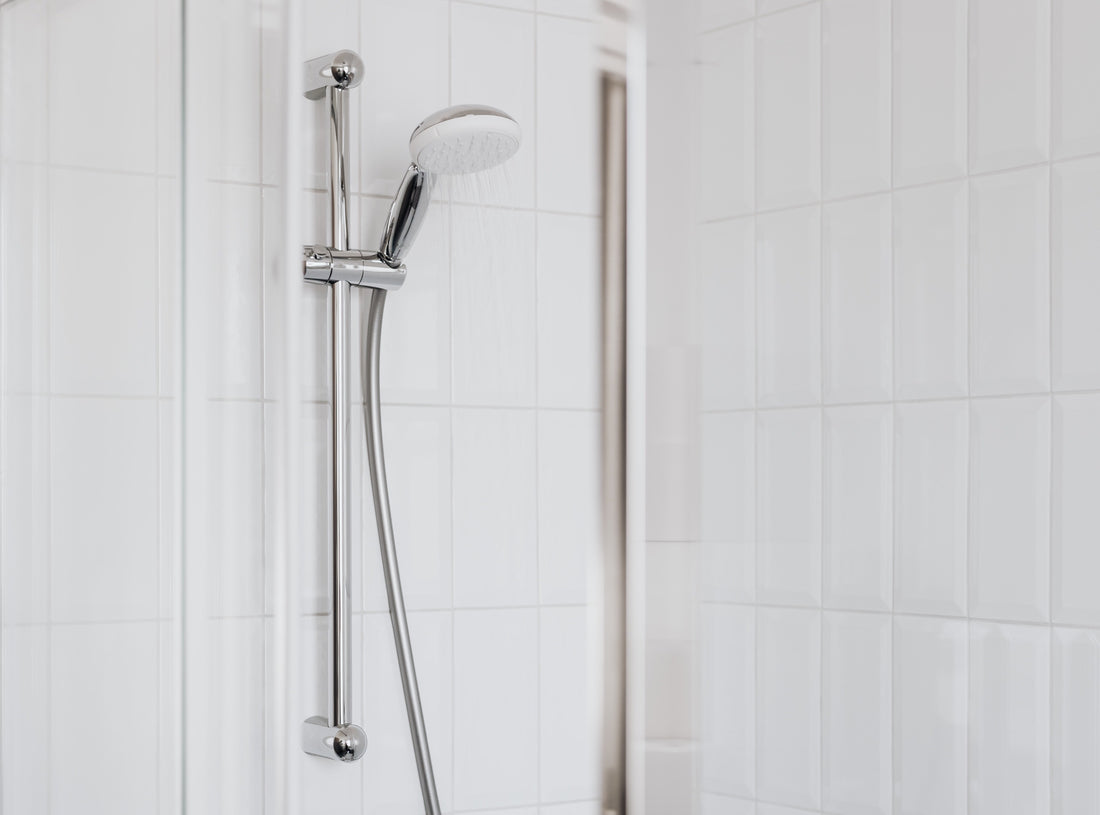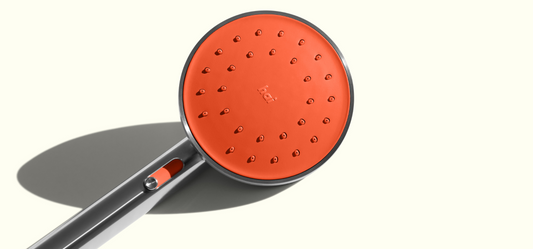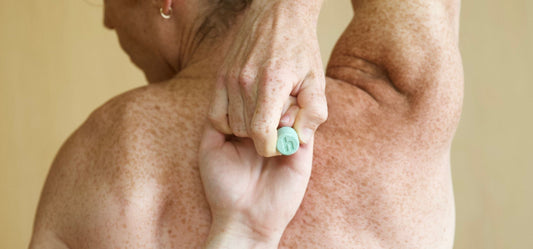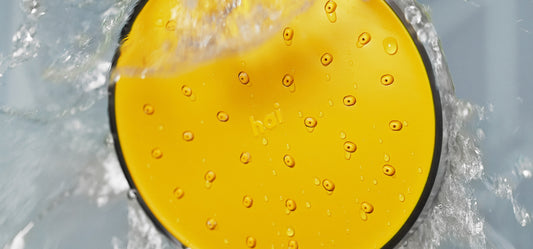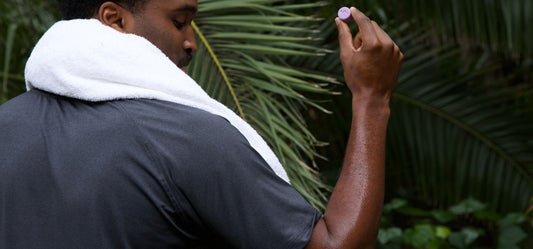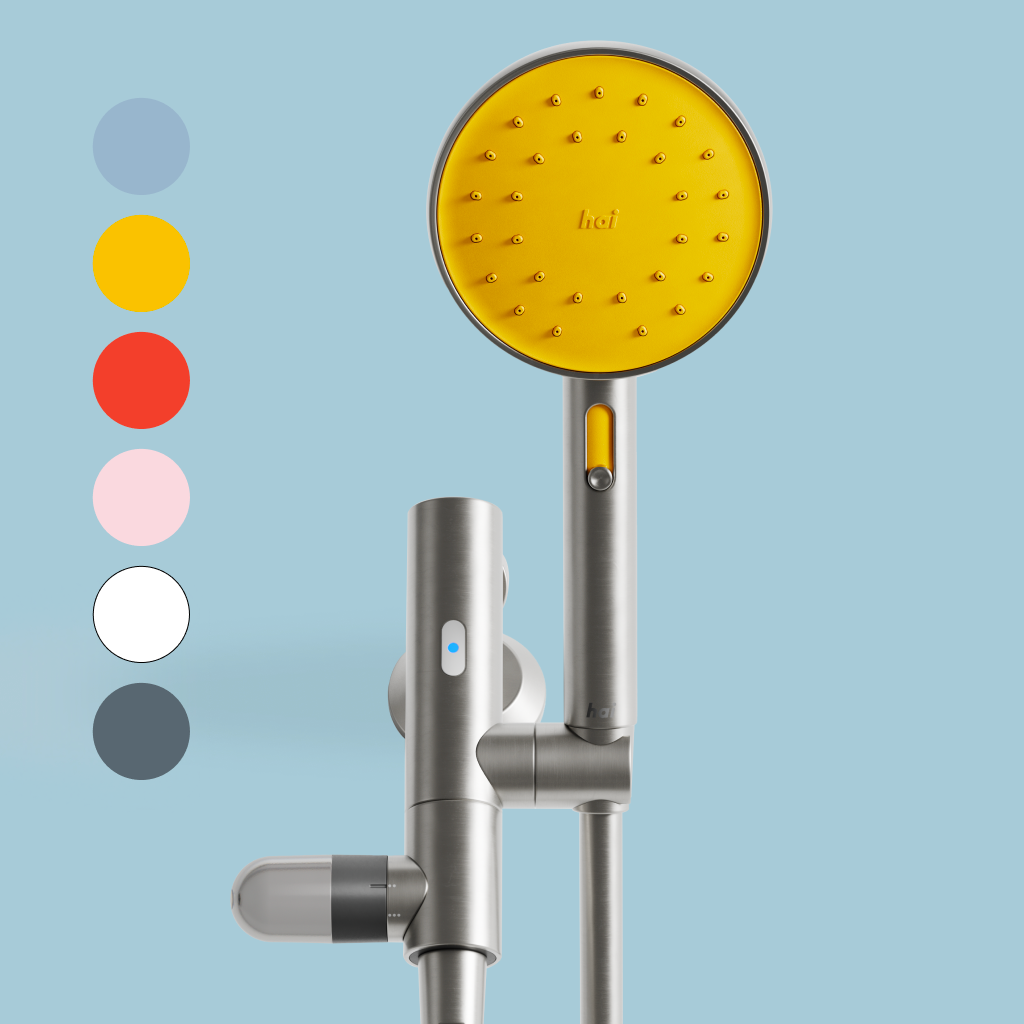How to increase water pressure in your shower (and end poor water pressure for good)
Your shower should be a sanctuary. It’s a place to kickstart your day or unwind at night. But when you turn it on only to be greeted by a trickle of water, it can quickly become a source of frustration.
If you’re struggling with your shower's water pressure, you’re not alone. It’s a common problem that can be caused by a variety of factors, from old plumbing to mineral deposits to faulty shower heads. Fortunately, there are a few things you can do to increase water pressure in your shower and say goodbye to a lackluster flow.

What's causing low water pressure in your shower?
Before you can fix the issue, you need to figure out the cause. Some of the answers might be beyond your control, but there's still plenty you can do to improve your shower experience. Here are some of the most common causes of low water pressure.
Is it your shower head?
Your issue might not be water pressure. Instead, you could be experiencing a problem with your shower head's flow rate. Shower head flow rate is measured in gallons per minute [link to GPM blog] (GPM). The higher the GPM allowance, the more water your shower head will disperse.
Flow rate requirements vary by state and country. Although the national standard in the United States is 2.5 GPM, different states have tighter restrictions to help conserve water. For example, California, Colorado, Hawaii, Washington, New York, and Vermont require a lower GPM flow as they have tighter conservation policies than the rest of the country.
Luckily, newer shower heads are designed to conserve water and meet flow rate standards without sacrificing performance. They do this by using advanced spray technology that maintains a consistent flow without wasting water.
Older shower heads are generally less efficient, so even at a higher flow rate, they may deliver a less-than-ideal stream. They can also become clogged with mineral deposits over time, which can further reduce water pressure. If your shower head is more than 10 years old, it might be time for an upgrade.
Is it your main shut-off valve?
Another common reason that you may be experiencing low water pressure is an obstructed main shut-off valve. If you or your landlord have recently done work on your home, check to make sure the shut-off valve is fully open. It's often a red lever located under the kitchen sink.
Water valves are sometimes turned off by mistake, so even if you think you would remember doing it, it's worth checking. If you have a closed water valve, simply turn it until it is fully open to restore the flow of water into your plumbing system.
Pay special attention while you do this. If any part of the valve, or the pipe near it, looks corroded, in danger of breaking, or is resistant to turning, call a plumber immediately. Otherwise, you risk snapping the pipe and flooding the house until you or someone else can shut off the curb-side water main.
Is it old or leaky pipes?
Leaky pipes are another common reason for low water pressure. Even a small leak can siphon enough water to reduce the flow in your shower.
If your home has old galvanized steel or iron pipes, they may also be corroding on the inside, which can restrict water flow.
To check for leaks, turn off all the faucets and appliances that use water, like your washing machine and dishwasher. Then, check your water meter. If the dial is moving, you likely have a leak.
Water leaks can also cause significant damage to your home, so if you have leaking or clogged pipes, it is important to find them quickly and repair them.
Is it your hot water heater?
If you have good cold water supply but low hot water pressure, the problem could be coming from your water heater. The first thing to do is to check that the shut-off valve is open. If not, open it, and this may get your hot water flowing freely.
Your hot water tank could also have become blocked by sediment. This is especially common in hard water areas. To clean your tank, you'll need to flush it out. Turn off the power to the unit and attach a garden hose to the drain valve at the bottom of the tank. Open the valve and let the water run until it's clear.
Is it a broken or faulty pump?
If you have your own well, the problem may be with the water pump. If the pressure switch isn't working correctly, it can cause low water pressure. The pressure switch is what tells the pump to turn on when the water in the tank drops below a certain level.
A broken or faulty check valve can also cause problems. The check valve allows water to flow into the tank but not back out. If it's broken, water can leak out of the tank, which will reduce water pressure.
If you think the problem may be with the water pump or check valve, it's best to call a plumber or well technician to diagnose and repair the issue.
Is it a municipal water service issue?
If your entire home is suffering from low water pressure, you might not have an issue with your pipes or shower head. Instead, it's more likely that there's a problem with your municipal water service.
If you have low shower water pressure because of your actual water supply, reach out to your local water department for support. They can help with issues like water main breaks, water line repairs, and more.
Do you have the opposite problem?
But it’s not all about low pressure. Some people struggle with the opposite issue: showers with extremely high pressure. High water pressure can be dangerous for you and wreak havoc on your shower and pipes. If your shower pressure is too high, get in touch with your local water department. If they’re unable to resolve the issue for some reason or if you find the pressure is still too high to feel comfortable, you can install a water-flow restrictor.

How to increase water pressure in shower.
Now that you've learned about possible causes, you can start considering solutions. We recommend starting with the simplest, most affordable fixes and working your way up.
1. Remove scale buildup to increase water flow.
Cost: $
Difficulty: Low
If your pipes or shower head is clogged with mineral deposits, it restricts the flow of water and decreases pressure. To clear mineral buildup, detach your showerhead and soak it in a vinegar-and-water solution overnight. In the morning, brush away any remaining deposits with an old toothbrush. You can also use a commercial descaling solution, which you can find at most hardware stores.
If your water is particularly hard, you might need to descale your pipes as well. This is a job best left to the professionals, but if you’re feeling handy, you can try a DIY approach.
2. Replace your shower head.
Cost: $$
Difficulty: Low
No matter the cause of your pressure issue, if you’re looking for an easy, affordable fix with long-lasting results, we recommend replacing your shower head. This is a straightforward job that most people can do in an hour.
Some shower heads are specifically designed to work in low-pressure environments. The WaterSense-certified shower head from hai has a 1.8 GPM flow rate and is engineered to save water while improving your overall shower experience. Impressive coverage and cutting-edge adjustable spray technology mean this low-flow, smart shower head delivers better pressure than most regular shower heads with less water waste. hai also comes in a regular 2.5 GPM model, designed to elevate your shower experience in standard water pressure.
Before you purchase a shower head, make sure you check your state's water conservation requirements. Some states, like California, Colorado, Hawaii, Washington, New York, and Vermont have lower flow requirements. A shower head with a 1.8 GPM flow rate will help you meet their standards. Nationally, the U.S. Department of Energy has mandated that all new shower heads have a maximum flow rate of 2.5 GPM.
Did you know...
The Environmental Protection Agency (EPA) awards the WaterSense label to products that use at least 20% less water and perform as well or better than regular models. Look out for this label when you shop for shower heads to secure an effective and eco-friendly solution.
3. Install a shower pump.
Cost: $$$
Difficulty: Expert (call a plumber)
A shower pump increases water pressure by upping the flow of water from your pipes. If you’ve tried other fixes and they haven't upped your water pressure, it might be time to install a shower pump.
This is a more complex solution and will likely require the help of a professional, but it’s a surefire way to increase water pressure in your shower. While this will cost you more than a low-pressure shower head, it is still at the more affordable end of the price scale.
Shower pumps come in two basic types: inline or peripheral. Inline pumps install directly into your plumbing and are often used in larger homes with multiple showers. Peripheral pumps, on the other hand, connect to your shower’s cold water supply and are a good option if you have low water pressure but adequate flow.
Check your local building codes before you buy a pump — some require a backflow valve to be installed along with the pump, which helps prevent contaminated water from flowing back into your home’s clean water supply.
Increasing the water pressure in your shower doesn't have to be expensive or difficult. With a little time and effort, you can enjoy powerful showers without breaking the bank.




